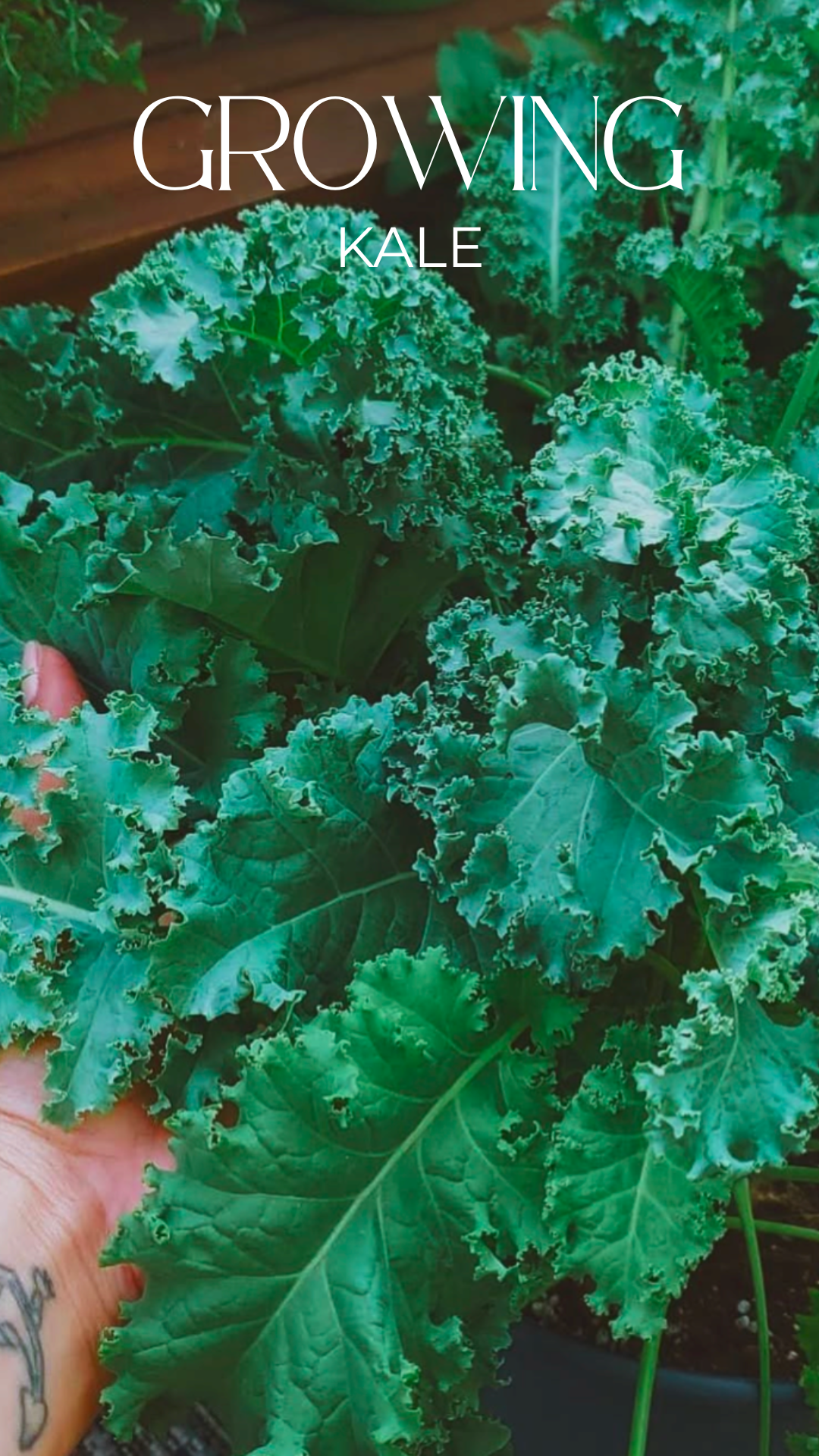
Timing
Kale is a cool-season crop that tolerates light frosts well and actually develops better flavor in cooler weather. For fall harvests, sow in mid- to late summer, about 8–10 weeks before your first fall frost. Alternatively, start seeds indoors 4–6 weeks before your last expected frost for summer harvesting.
Starting
Sow 2–3 seeds per pot about ¼ to ½ inch (0.6–1.2 cm) deep. Keep the soil consistently moist and provide light. Seedlings typically emerge in 5–10 days. Thin to one plant per pot once seedlings reach 2–3 inches tall and have their first set of true leaves. Snip weaker seedlings at the base before transplanting.
Growing
Transplant kale outdoors once seedlings have 4–5 true leaves—usually around 4–6 weeks after sowing. Harden off by gradually exposing them to outdoor conditions over 5–7 days.
Transplant 1–2 plants per 5-gallon container with good drainage. Place in a location that receives full sun to partial shade.
Kale is generally low-maintenance but benefits from occasional feeding with compost or a balanced fertilizer, especially in containers. Keep soil moist but not soggy.
Harvest
Kale is typically ready to harvest 55–75 days after sowing. Begin harvesting once leaves are about the size of your hand, picking the outer, lower leaves first and leaving the inner growth to continue producing.
Frequent harvesting encourages new growth. For tender leaves, especially for fresh eating, pick them young. Kale can tolerate frost and even snow, and cold weather improves its sweetness. Harvesting can continue well into fall and early winter.